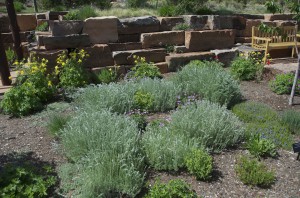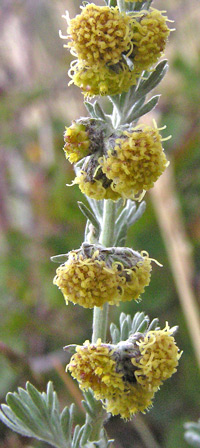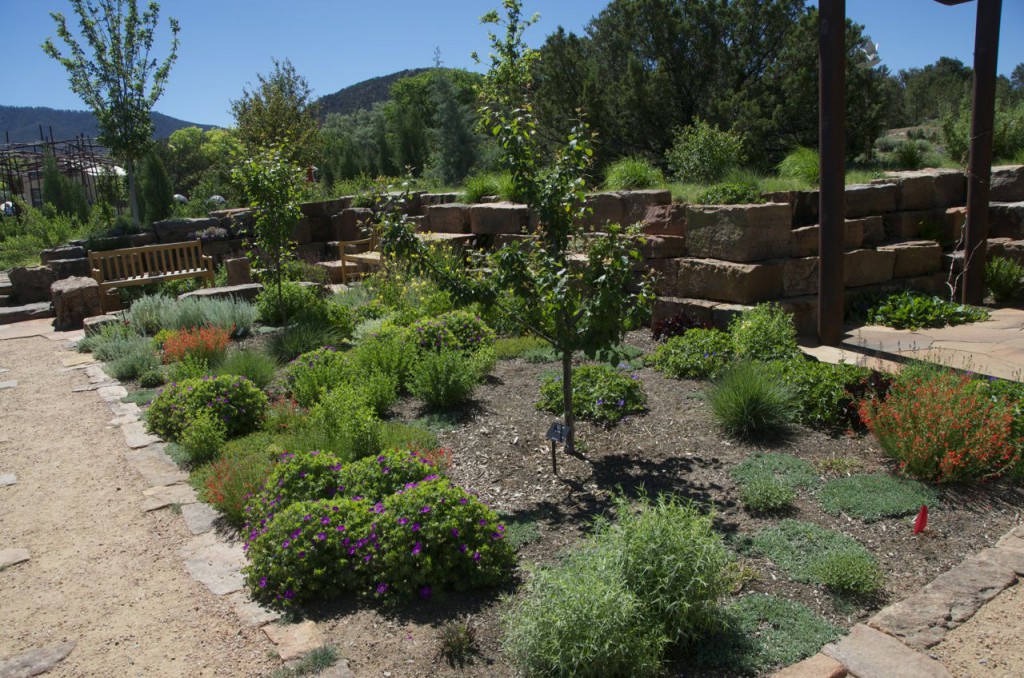Scientific Name: Artemisia frigida
Common Name: Fringed sage (or sagebush), Silky wormword, Prairie sagewort, Arctic sage

Artemisia frigida, Fringed sage (Photo by Janice Tucker)
Plant Family: Asteraceae – Aster
By Janice Tucker
In addition to the bright flowers and showy shrubs, there are plants that enhance and tie everything together to make a garden pop. The Artemisia frigida belongs to the latter group. With its soft, lacy texture and pleasing silver-grey foliage, it is a lovely plant. But more importantly, when growing with other plants in the garden, it showcases the vibrancy of the more colorful flowers and shrubs.
The Artemisia frigida is native to North America in the western United States, primarily in the Rocky Mountain West and Great Plains, as well as Canada, Europe and Asia. It has been introduced, with mixed success, to the eastern and north-central regions of the United States.
The Artemisia frigida is a small, perennial shrub that reaches a maximum height of a bit less than 1½ feet. Gray-green stems covered with soft, silver-gray hairs emerge from a woody base. Tufts of soft, grayish, lobed leaves line the stems, giving it a feathery appearance. In summer and early autumn, blooms of tiny, finely haired, yellow flowers appear in tight clusters at the base of the leaves. The seed-laden flowers are hermaphrodite (having both male and female organs). The entire plant emits a camphor-like

Artemisia frigida flowers (Photo ©Al Schneider, www.swcoloradowildflowers.com)
scent that is most prevalent after a rain or when crushed. Propagation is by wind or by layering. Layering occurs when a portion of an aerial stem grows roots while still attached to the parent plant and then detaches to grow independently. This process can take place naturally or employed by horticulturists when propagating desirable plants. Artemisia frigida has an adaptable root system. Deep taproots develop in dry soils and in its natural habitats, but are much shallower where the soil is primarily moist.
Artemisia frigida grows best in dry locations, requiring full sun. Water requirements are minimal after the plant has been established. It requires a well-draining soil with low alkaline content. It is not particularly happy in locations with high humidity. Root rot is a problem when the soil is kept too moist. Its drought tolerance makes it a desirable plant for the Santa Fe climate. Very little maintenance is required. Deadheading the flowers after bloom is recommended to improve appearance and to encourage new growth. It is deer and rabbit resistant and attractive to bees.
The Artemisia genus is named for Artemis, the Greek goddess of chastity. The species frigida means growing in cold regions, or cold and/or stiff. The common names of sagebush or sagewort refer to its resemblance in appearance and scent to some salvias (sages). However, it is not related to the Salvia genus. Artemisia is in the Asteraceae (Aster) family, while Salvia is in the Laminaceae (Mint) family. Fringed sage refers to its lacy texture. The pronunciation of the scientific names are: Artemisia – “ar-te-MIZ-ee-uh” and frigida – “FRIH-jih-duh”.
Artemisia frigida is high in protein and a desirable food plant for livestock. Wildlife also feeds on the foliage in fall, winter and spring. Native Americans have utilized the Artemisia frigida for medicinal and traditional purposes. Various concoctions have been made to treat heartburn, coughs, colds, headaches, fevers and wounds. In some ceremonies, sprigs are dipped in water and planted with corn to ensure an abundant crop. Artemisia is a principle of the liqueur absinth, which is banned in many parts of the world because of its toxic properties.
Artemisia frigida grows naturally at Santa Fe Botanical Garden’s Ortiz Mountains Educational Preserve and in the beds in front of the north ramada at the Botanical Garden at Museum Hill. If your garden could benefit from extra texture and softening try planting Artemisia frigida. It will highlight your brightly colored plants to create a beautiful, complementary garden.

Botanical Garden at Museum Hill stone wall and beds (by Janice Tucker)
Sources: Missouri Botanical Garden, www.missouribotanicalgarden.org
Southwest Colorado Wildflowers, www.swcoloradowildflowers.com
Plants for a Future, www.pfaf.org
Blue Planet Biomes, www.blueplanetbiomes.org
Dave’s Garden “Welcome to Botanary”, http://davesgarden.com/guides/botanary/
Stearn, William T., Stearn’s Dictionary of Plant Names for Gardeners, A Handbook on the Origin and Meaning of the Botanical Names of some Cultivated Plants, Cassell
Wellington House, 125 Strand, London WC2R OBB, 1996
Santa Fe Botanical Garden www.santafebotanicalgarden.org/explore-nature/plant-database/
Thanks to Helen Woody for proofreading this article.


